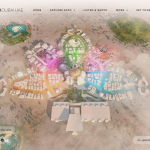Introduction to Pattern Design
Pattern design is a captivating and versatile art form that has been a fundamental aspect of human creativity for centuries. From intricate geometric patterns to whimsical floral designs, pattern design encompasses a wide range of styles and techniques that appeal to individuals across various cultures and industries. The allure of pattern design lies in its ability to transform ordinary surfaces into visually stunning works of art, making it a popular choice for interior decor, fashion, and graphic design.
The Artistic Expression of Patterns
Patterns serve as a unique form of artistic expression, allowing designers to convey emotions, tell stories, and evoke specific moods through their creations. Each pattern carries its own symbolism and meaning, whether it’s inspired by nature, culture, or abstract concepts. Artists and designers often use patterns to communicate their creative vision and connect with their audience on a deeper level.
Historical Significance of Patterns
Patterns have played a significant role throughout history, reflecting the artistic styles and cultural influences of different time periods. From ancient civilizations to modern-day trends, patterns have been used to adorn textiles, architecture, and artifacts, showcasing the creativity and craftsmanship of various societies. Studying the evolution of patterns provides valuable insights into the cultural heritage and artistic development of humanity.
Technical Aspects of Pattern Design
Creating patterns involves a blend of artistic flair and technical precision. Designers use tools like Adobe Illustrator, Photoshop, and traditional methods like hand-drawing and block printing to develop intricate and seamless patterns. Understanding color theory, symmetry, and repetition is essential in achieving harmonious and visually appealing designs that can be applied to various products and surfaces.
Applications of Pattern Design
Pattern design finds its applications in a wide range of industries, including fashion, interior design, packaging, and digital media. From clothing patterns and wallpaper designs to branding elements and website backgrounds, patterns enhance visual aesthetics and create memorable experiences for consumers. The versatility of pattern design allows it to be adapted to different mediums and platforms, making it a valuable asset for businesses and creatives alike.
Conclusion
In conclusion, pattern design is a dynamic and expressive art form that continues to inspire and captivate individuals worldwide. Whether used to convey cultural heritage, evoke emotions, or enhance visual appeal, patterns play a crucial role in shaping our surroundings and influencing our perceptions. Embracing the beauty and creativity of pattern design opens up endless possibilities for artistic exploration and innovation.









